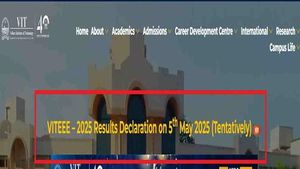On April 30, 2025, President Donald Trump signed a new executive order mandating that all commercial truck drivers in the United States demonstrate proficiency in English. This move, aimed at enhancing road safety, has sparked significant discussions among employers in the logistics and transportation sectors.
The executive order emphasizes that truck drivers must be able to read road signs, communicate effectively with law enforcement, and interact with employers and customers in English. This order follows Trump’s earlier executive order designating English as the country’s official language.
The order directs the Department of Transportation to issue new guidance and resume strict enforcement of English language requirements for truck drivers. As a result, drivers who cannot demonstrate sufficient English skills may be placed “out-of-service,” meaning they cannot legally operate a commercial vehicle until they comply.
The administration cites public safety as the primary motivation behind this initiative. Effective communication is deemed essential for responding to emergencies, following traffic laws, and ensuring smooth operations on the road. In a statement, a spokesperson for the administration noted, "Safety is our top priority, and clear communication is key to ensuring it on our highways."
While some industry groups, like the Owner-Operator Independent Drivers Association (OOIDA), have welcomed the executive order as “common sense,” others have raised concerns. Immigrant rights advocates warn that the policy could create employment barriers and lead to discrimination, particularly for communities with a high proportion of non-native English speakers.
For U.S. employers, particularly those addressing ongoing driver shortages, the implications of this order are significant. Many trucking companies rely on foreign talent brought in under specific visa categories. For instance, the H-2B Visa allows drivers to work in the U.S. for up to nine months at a time, while the EB-3 Visa permits employers to sponsor foreign drivers for long-term employment.
The Biden administration had recently expanded the H-2B program, nearly doubling the available permits for foreign truck drivers in 2025. However, the future of this expansion is now uncertain under Trump’s renewed focus on restricting immigration. Employers should review their hiring and training practices to ensure compliance with the new English proficiency standards.
Failure to comply with the executive order could result in drivers being placed out-of-service, which would impact delivery schedules and operational efficiency. Moreover, some drivers, particularly those from immigrant backgrounds, may face new hurdles in maintaining their employment if they cannot pass English proficiency assessments.
Employers might need to invest in language training or additional support to retain valuable drivers and minimize turnover. The trucking industry continues to face a chronic driver shortage, with estimates of a deficit exceeding 80,000 drivers nationwide. Restricting the available labor pool could exacerbate these shortages, potentially leading to delivery delays and higher costs for businesses and consumers.
Looking ahead, while this executive order represents a significant policy shift, it is important to note that English proficiency requirements have long existed at the federal level for commercial drivers. The new order primarily increases enforcement and clarifies consequences for non-compliance.
Employers who already conduct due diligence in hiring and training should experience minimal disruption. However, for those employing foreign drivers, it’s advisable to review internal processes, ensure all drivers meet language requirements, and provide support where needed. Staying proactive will help navigate any regulatory changes with confidence.
In a separate development, an opinion piece published on the same day in The Washington Times highlights high dropout rates in Fairfax County, Virginia, particularly among multilingual learners. The article points out that the large majority of students dropping out are those labeled as multilingual learners, formerly referred to as English language learners.
Since 2019, the number of multilingual learners and associated costs have grown significantly in Fairfax County. By fall 2024, 26.8% of Fairfax County Public Schools students were multilingual learners. This increase has raised concerns among school administrators regarding dropout rates, chronic absenteeism, and low standardized test scores among these students.
The proposed fiscal 2026 expenditure for English language instruction is an extra $5,572 per English language learning student, bringing the district’s total cost for such instruction to $210 million, up from $93.9 million in fiscal 2019. Despite this substantial increase in spending, outcomes for multilingual learners remain troubling.
Fairfax County residents are facing their largest tax increase in a decade, and the Board of Supervisors is grappling with a $300 million fiscal 2026 budget shortfall. Critics argue that the sanctuary policy, which likely attracted many illegal immigrants needing English language services, should be repealed to address these financial strains.
The opinion piece suggests that rather than simply increasing funding, Fairfax County leaders need to focus on fostering student learning and preventing dropout rates, particularly among multilingual learners. The author, Stephanie Lundquist-Arora, argues for competent leadership and an intensive external audit of the budget to ensure effective use of resources.
As the class of 2025 graduation season approaches, county leaders must prioritize student outcomes and make necessary changes to improve the educational experience for multilingual learners. This dual focus on both the trucking industry and educational policies reflects broader challenges in addressing the needs of diverse communities across the nation.




